
BACK TO TOP
10 new public art works to see in Mumbai
From works by Yayoi Kusama to Jitish Kallat to those by one of India’s best-known Pichwai artists, the public art on view at the Nita Mukesh Ambani Cultural Centre offers a staggering rangeBy Arman Khan | 9th Dec 2022
How do cities speak to us? It’s a question that we often engage with, but rarely consciously. In India, there are various markers of a city—the lively streets collapsing into each other, the metallic notes in the air, the promise of a dream by a beach, the soul-crushing traffic or just the hum of its narrow alleyways leading to quieter worlds.
For centuries, public art has attempted to harmonise these living chords of cities and towns across the world. In doing so, it has not always been a passive observer. In North America, public art shaped discourse around civil rights; the open-air sculpture exhibitions in New York from the 1930s championed environmentalism. Closer home, various public artworks across the country have stressed the need for peaceful cohabitation with big cats under the “Mission Leopard” campaign.
It is in this context that the soon to open Nita Mukesh Ambani Cultural Centre at the Jio World Centre assumes significance. It is a unique space of its kind that will bring together a range of acclaimed artists, both as part of its curated exhibitions as well as the public artworks on view. The public art at the Centre unapologetically celebrates the democratic, stimulating and awe-inspiring power of public art.
Here’s an introduction to 10 public artworks on display at the Nita Mukesh Ambani Cultural Centre (NMACC):

Kamal Kunj (2019-20) by Raghunandan Sharma and Pichwai artists from Nathdwara
The genesis of the intricate Pichwai style of paintings, which literally translates to “backdrop”, was when artists came up with vividly imagined ways of depicting festivities, passing seasons and other ambient features as backdrops for Lord Shrinath. They were originally used to decorate the temple of Shrinathji (Shrinathji ki Haveli) in Nathdwara, Rajasthan. This dying temple art is now limited to the Chitrakaron Ki Gully area in the town of Nathdwara where Lord Shrinath is said to have arrived from Braj with his followers. This colossal painting stands at 612.5 inches and 281 inches wide and is made with natural pigments and gold foil by Raghunandan Sharma, one of the most well-known artists from Nathdwara. The two peacocks set the mood for a vibrant bed of flowers—with the marble station for the deity placed at the centre. Kamal Kunj is a commissioned work that is an initiative by the Reliance Foundation to offer patronage to the Rajasthani artists pursuing this form of painting.
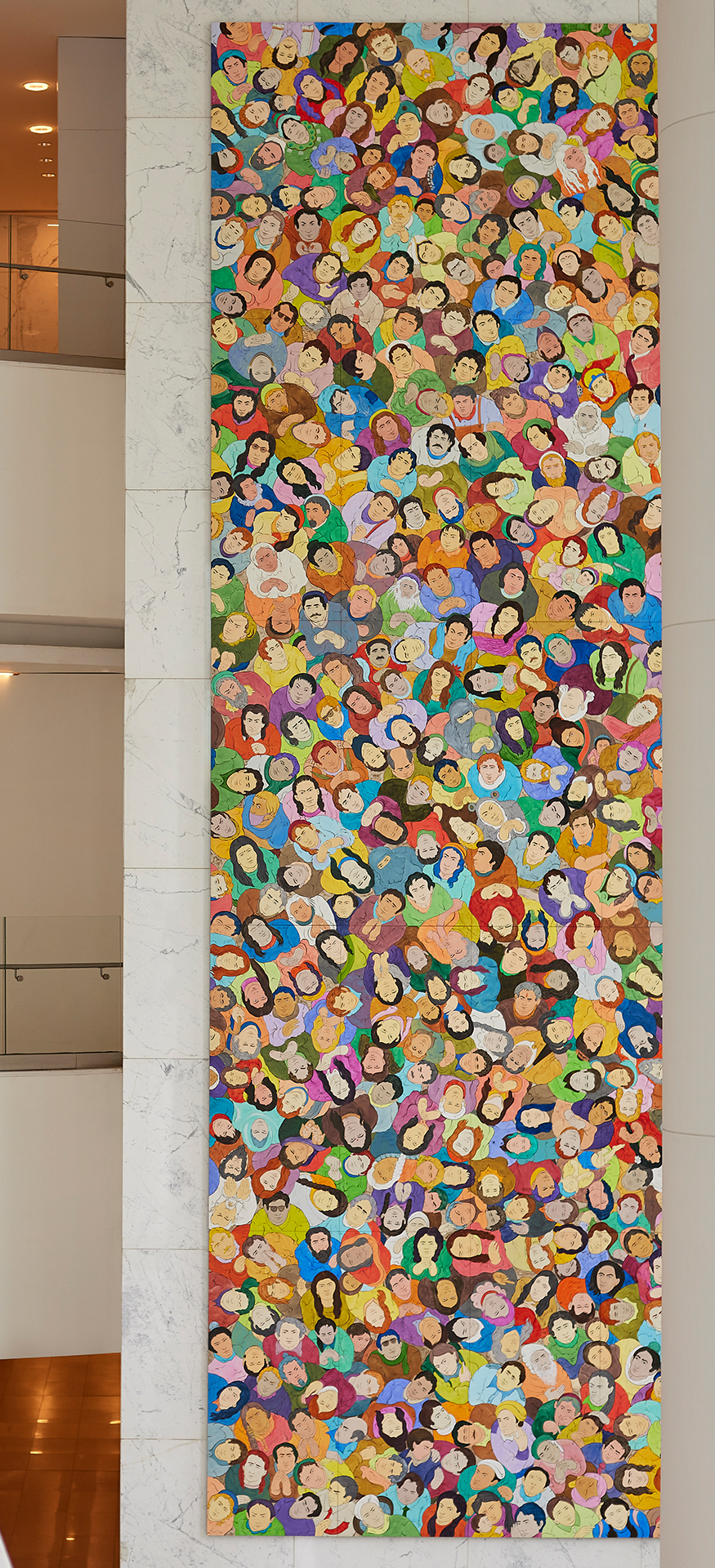
Seekers Paradise (2021) by NS Harsha
Always deriving a wealth of inspiration from the amorphous pools of the local and the global, the Mysuru-based visual artist NS Harsha marries everything from the quirky ideals of the comic book tradition with the gritty aspects of pop culture and even Indian miniature painting. In Seekers Paradise, painted with acrylic on plywood, Harsha projects a dream, or rather the hope of it, in a metropolis. There is a cacophony of voices, diverse faces wearing clothes in vivid hues, all gazing upwards. The artist seems to be beckoning the viewers to look up at the raging skyline and the many wonders it holds—not individually but as a community holding the gaze of a city and its many promises.
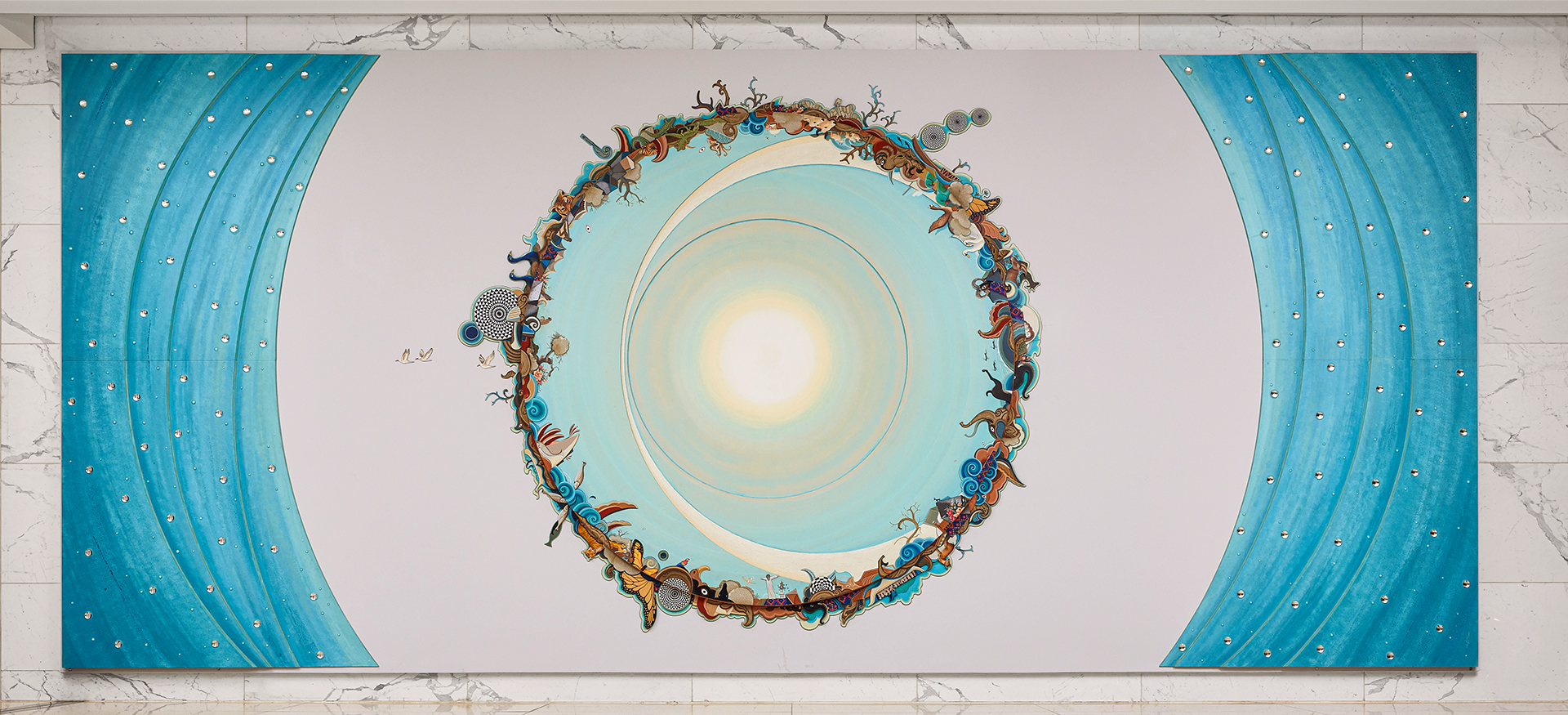
Earth’s Whisper (2020-21) by Jagannath Panda
The Odisha-born artist has engaged with themes of mindless urbanisation, the increasing disconnect between man and nature, socioeconomic inequities and ever-moving cultural identities with a rigour second to none. In Earth’s Whisper, our cosmos is depicted as a layered wonder, unfolding and intersecting. One cannot divorce any element of the natural world from the singular human existence. Our worlds might seem many, but they are all inextricably linked to each other, forming a powerful whole. The fine use of resin, mirror, paint and fabric adds textures to the imposing artwork.
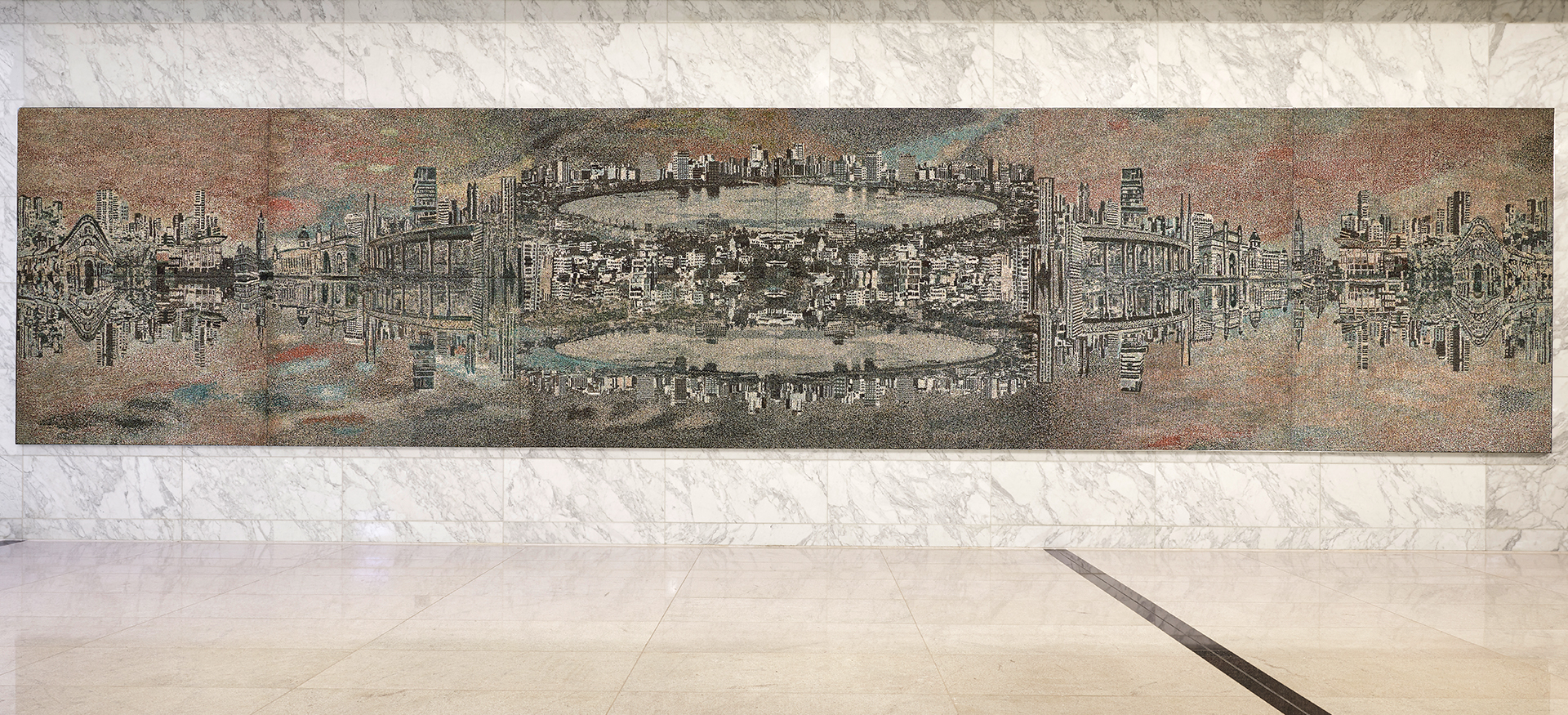
City Obscure (2022) by Vibha Galhotra
Always working at the intersection of a deeply felt understanding of ecology, economics and geography, Galhotra experiments with form and function to give shape to the anxieties and fears of the modern world. City Obscure takes her preoccupations further and uses Mumbai as a muse—its dreamscape constructed entirely with hundreds of ghungroos, or ankle bells. Each finely crafted pixel shows us the juxtaposition of the city’s colonial heritage with its dynamic waters.
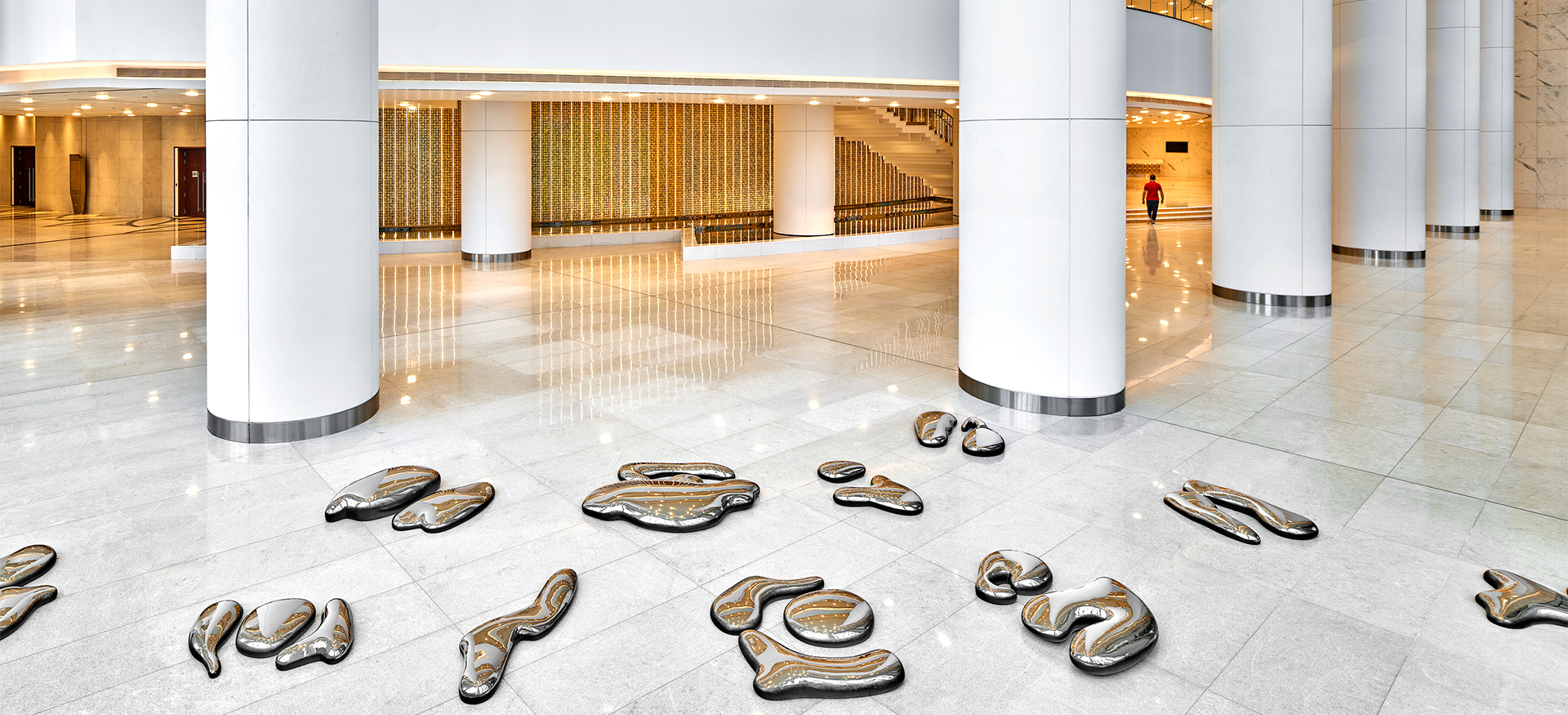
Clouds (2019) by Yayoi Kusama
The renowned 93-year-old Japanese artist has consistently leveraged the combined power of performance, sculpture and colours in ways that are stunningly original. The Clouds, however, can be considered a stylistic departure from her trademark artworks featuring polka dots and infinity installations that propelled her to global fame. Here, the random arrangement of 90 organically shaped clouds made of stainless-steel mirror the sky. The gaze here is intensely personal and yet is set against the wider cosmos. In each mirror, new worlds are reflected, concentrated and even exaggerated.
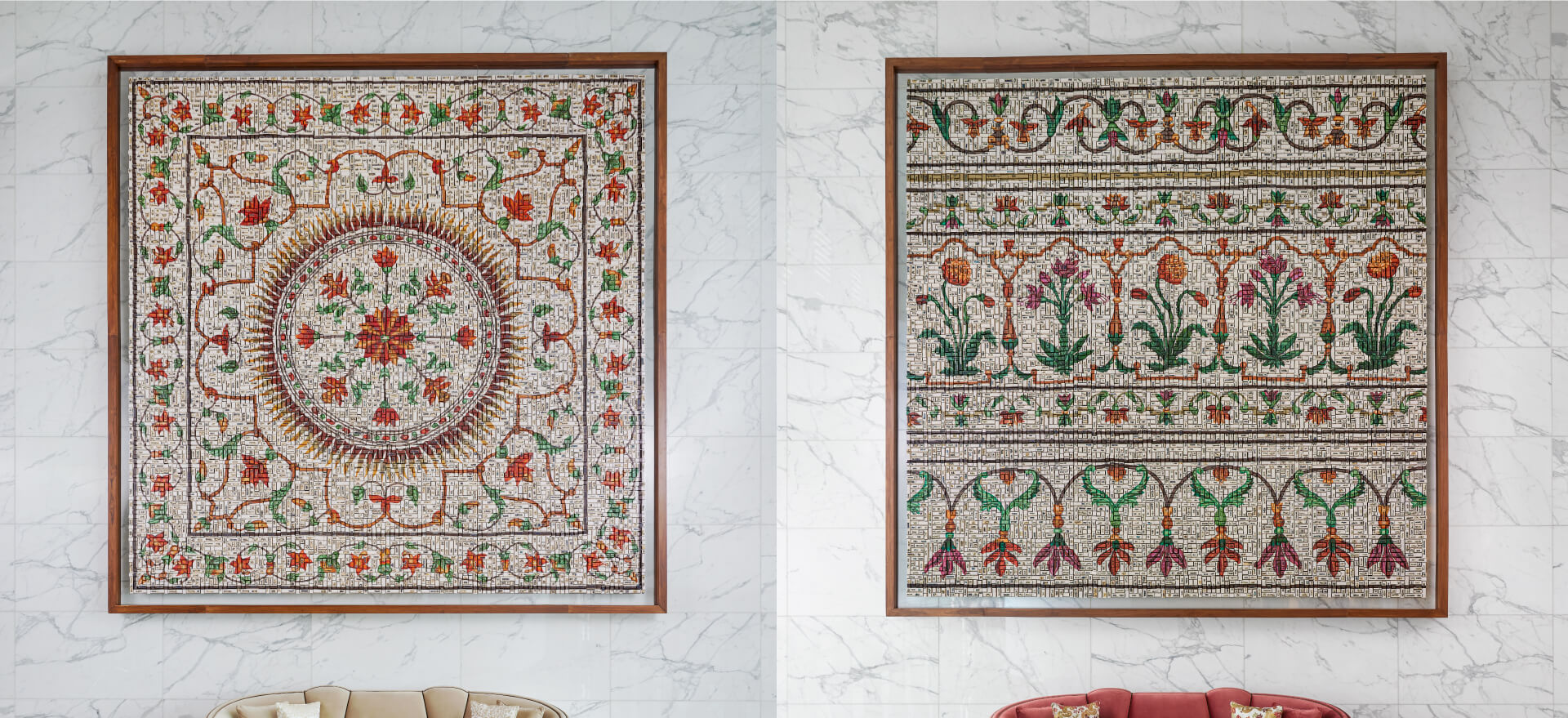
Closet Quarries I and II (2021-22) by Reena Kallat
Mumbai-based visual artist Reena Kallat has often used the motif of the rubber stamp—signifying both the bureaucratic nature of our functional apparatus and its attempts at always wanting to tame the city. In Closet Quarries I and Closet Quarries II, the great inlay patterns found in the Mughal architectural monuments in India are referenced. In her previous works, Kallat has brought alive the names and lives that slip between the endless cracks of our fragile government registers. At over 180 inches in height and width, both these works bring together acrylic paint, wood, plexiglass and metal to demonstrate flowers in different orientations and the expanse of our cultural heritage, harkening back to the arabesque, Pietra-dura imprints of the Mughal times. The artworks portray how the marriage of the verbal and the visual evokes notions of fractured identities, the myths that hold us, and the longing for stories that build a monument.
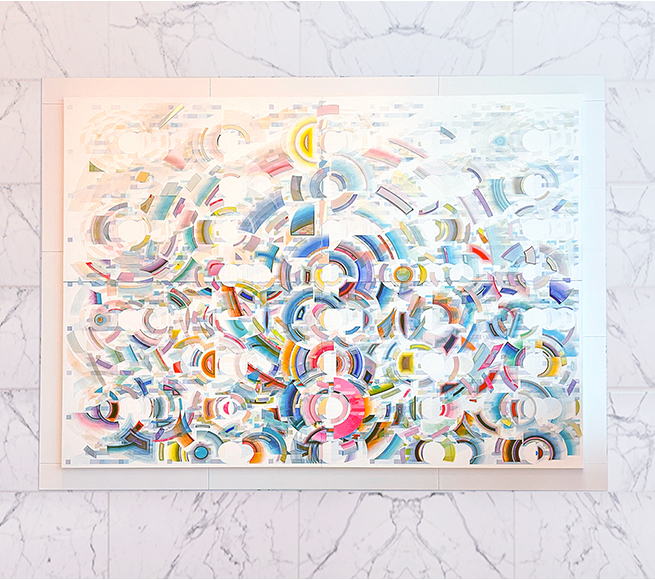
Mechanism 12 (2022) by Tanya Goel
How does one structure chaos? The artist is known for creating her own unique materials from a marriage of charcoal, concrete, glass, soil, mica, graphite and foils, and even materials picked up from the construction rubble across Delhi. Goel has always been concerned with portraying the many paradoxes of our digital screens—the worlds they hold and those they obfuscate. In Mechanism 12, the fading abstractions merge into more structured and cellular forms, inviting the viewer to disrupt whatever mathematical equations are holding the bedrock of the chaos represented. Goel’s graphic fusion of materials constitutes her apparatus of chaos.
Here After Here After Here - 19°03'55.3"N 72°51'59.5"E (2021-22) by Jitish Kallat
Over the past 25 years, Kallat has trained his acute eye for varying scales and forms to highlight the beauty of fluid geography, sacred geometry and the glowing interstices between the nation-state and the looming cosmos. Here, the artwork uses abstractly looped highway signage to connect not just towns but entire planets and galaxies. In its 12-metre span, the artwork spills across diverse worlds, closing the gap between faraway cities, and harmonising the territorial limits of our living world to something far more alien, and otherworldly. Over foundational concrete, the endless blue loops made of aluminium panels elevates this artwork into a more complex, almost Dadaist plane.
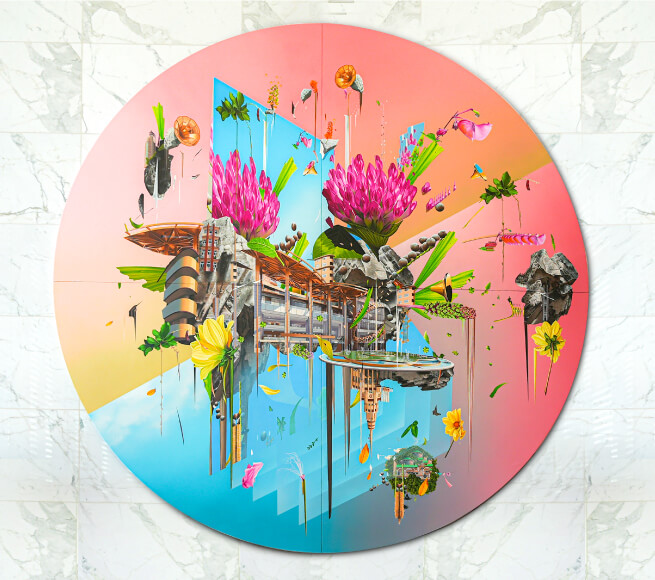
Arboretum I (2022) by Thukral & Tagra
In botany, the term “Arboretum” refers to a botanical collection composed entirely of a diverse variety of trees. In the psychedelic imagination of Jiten Thukral and Sumir Tagra, it is the culmination of the artist duo’s ambitious, ethnobiological work at documenting more than 60 floral species across various iconic biological parks and reserves in India. This intricate oil on canvas work is part of Thukral & Tagra’s long-running 'Somnium Seminibus' series. In many ways, Arboretum I, from the same series, represents their lucid dream and carries the pair’s signature surrealist style—here, the biological universe seems suspended in 3D, surrounded by projectiles of strange flowers, jagged skyscrapers and hybrid musical instruments.

